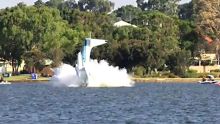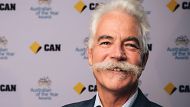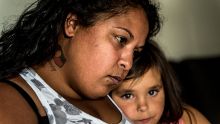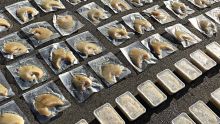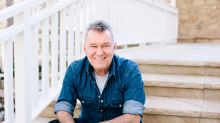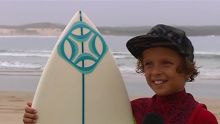Biomedical scientist Alan Mackay-Sim, whose research helped achieve a feat described as "more impressive than man walking on the moon", has been named the 2017 Australian of the Year for his pioneering stem cell research.
Professor Mackay-Sim's work was central to the 2014 surgery that allowed Darek Fidyka, a Polish firefighter, to walk again and even ride a custom-built bicycle. This made him the first paraplegic in the world to recover mobility after the complete severing of the spinal nerves. The success was hailed by fellow researcher Geoff Raisman as more impressive than the moon landing.
More National News Videos
2017 Australian of the Year: Alan Mackay-Sim
Biomedical scientist Emeritus Professor Alan Mackay-Sim has been named 2017 Australian of the Year for his pioneering work in repairing damaged spinal cords. Vision courtesy ABC TV and Griffith University.
Mr Fidyka, who had been stabbed 18 times in the back by his partner's former husband four years earlier, described the feeling of recovering movement in his legs as akin to being "born again".
Professor Mackay-Sim is a leading global authority on the human sense of smell and the biology of nasal cells. The successful surgery that allowed Mr Fidyka to walk again involved taking cells from his nose, growing them in a lab and injecting them into his spinal cord.
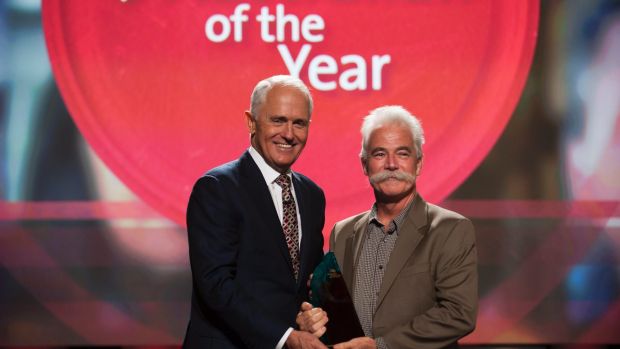
Professor Mackay-Sim, 65, himself relied on a stem cell transplant two years ago when he was diagnosed with myeloma, a rare form of blood cancer that develops in the bone marrow.
He was presented with his Australian of the Year award by Prime Minister Malcolm Turnbull on Wednesday night.
When he was recognised as Queensland's Australian of the Year, he expressed "shock and horror" that he had been singled out for recognition given his research involved work by many fellow scientists.
Sister Anne Gardiner, an 85-year old Catholic nun, was named Senior Australian of the Year for her work in promoting Tiwi culture and supporting the local community on Bathurst Island, where she moved when she was 22.
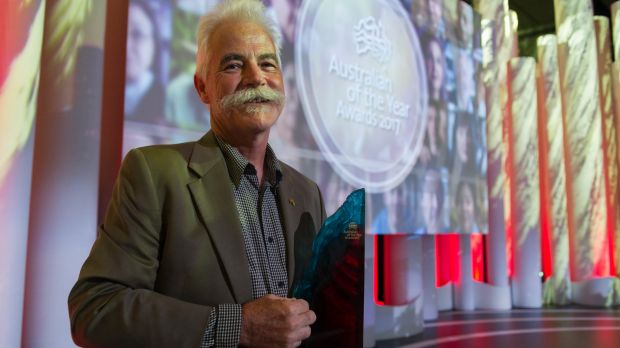
Fashion designer Paul Vasileff, 26, whose creations have been worn on the Oscars red carpet, was named Young Australian of the Year.
Professor Mackay-Sims said he hoped to use the award to raise awareness of spinal cord injuries and research into rare brain diseases.

He said Australia should prioritise research and health spending not only to care for the disabled and diseased in the community but for radical treatments to reduce health costs, including the seven clinical trials under way in Australia testing new treatments for spinal cord injury.
"Researchers need a long view, much longer than the political horizon," he said.

"More than 10,000 people in Australia have a spinal injury and we add to that tally by a person every day and the cost to Australia is about $2 billion annually.
"Now 60 years ago, Australia was one of the first countries to move away from the idea that spinal cord injuries could not be treated and intense research in the last 20 years gives hope that future spinal cord injuries will be treated early and the effects minimised."
His appointment follows former army chief David Morrison, who was recognised last year for his work in promoting gender equality and diversity.
Professor Mackay-Sim was recognised above other state finalists including mining magnate Andrew "Twiggy" Forrest, refugee advocate Paris Aristotle and child soldier-turned lawyer Deng Adut.

He grew up in Roseville on Sydney's north shore and served for a decade as the director of the National Centre for Adult Stem Cell Research at Griffith University.
His work there pioneered the use of stem cells to understand the biological basis for conditions such as Parkinson's disease, schizophrenia and hereditary spastic paraplegia.
He received his PhD from Macquarie University before studying at the University of Pennsylvania in Philadelphia and the University of Wyoming, Laramie.
His appointment follows previous Australians of the Year with scientific backgrounds including climate change activist Tim Flannery, immunologist Ian Frazer, biologist Gustav Nossal and epidemiologist Fiona Stanley.
